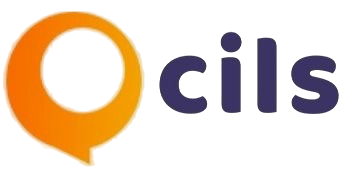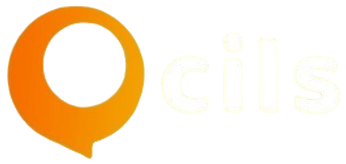How to Write SEO Content That Fulfill EEAT Principles?
Creating SEO content that meets Google’s EEAT (Experience, Expertise, Authoritativeness, and Trustworthiness) standards is essential for achieving higher search rankings and building audience trust. This approach focuses on showcasing your in-depth knowledge, citing credible sources, and ensuring content accuracy. Let’s explore actionable strategies to write content that satisfies EEAT principles and positions your site as a reliable authority in your niche.

How to Write SEO Content That Fulfill EEAT Principles?
Search engine algorithms have evolved significantly in the past few years, moving beyond keyword stuffing and backlink quantity to focus on something far more valuable: trust. In today’s digital landscape, Google prioritizes content that demonstrates expertise, experience, authority, and trustworthiness — known collectively as EEAT. Alongside this, Google’s Helpful Content Update emphasizes creating genuinely useful content for real users, not just for search engines.
So what does this mean for content creators, marketers, and SEO professionals in 2025? It means writing with purpose, authority, and a user-first mindset. in this blog, we’ll explore what EEAT is, how it connects with Google’s Helpful Content System, and how you can craft content that ranks well and builds long-term trust.
What Is EEAT?
EEAT stands for :
1. Expertise :
Demonstrates deep knowledge in a particular field.
2. Experience :
Shows first-hand or life experience with the topic.
3. Authoritativeness :
Signals credibility, often reinforced by credentials or citations.
4. Trustworthiness :
Reflects overall reliability, accuracy, and transparency.
These elements are not a direct ranking factor like a keyword, but Google uses them as qualitative signals when assessing content quality, especially in YMYL (Your Money or Your Life) topics like finance, health, and legal information.
What Is the Helpful Content Update?
Released in 2022 and optimized over the years, Google’s Helpful Content Update compensates for content that centers people, not search engines.. This means:
- Answering real user questions
- Avoiding fluff and filler content
- Demonstrating clear value
- Being created by knowledgeable sources
Google has moved towards rewarding content that is useful, reliable, and written with a specific audience in mind. Thin, clickbait-style, or auto-generated content is penalized.
Why EEAT and Helpful Content Matter for SEO in 2025
Gone are the days when SEO was solely about keywords and technical tweaks. Today, success in search is deeply connected to:
- Building user trust
- Delivering real value
- Demonstrating credibility
Search engines aim to surface the most helpful and reliable content. That means pages that answer the user’s query better than anyone else — with proof that the author knows what they’re talking about.
For SEO professionals and content marketers, that means investing in :
- High-quality, original writing
- Author bios and credentials
- Real-world examples and case studies
- Third-party references and links
How to Write SEO Content That Fulfills EEAT Principles
- "Best running shoes under 3000"
- "How to make banana bread"
- "Digital marketing tips for beginners"
Good SEO begins with keyword research — learning the keywords your audience is looking for and organically using them in your content.
But be careful: too much focus on keywords can do more harm than good to your rankings. It’s about finding a balance.
How to Write SEO Content That Fulfills EEAT Principles
1. Showcase Author Expertise and Credentials
Google looks at the creator behind the content. Add detailed author bios, including qualifications, certifications, and relevant experience.
Example : If you’re publishing cybersecurity tips, having the article written by a certified ethical hacker boosts trust.
2. Include First-Hand Experience
visiting a place, or solving a specific problem, authentic stories matter.
Example : Instead of writing “Top CRM Tools,” add personal usage insights like “Here’s how HubSpot helped our sales team increase conversion by 30%.”
3. Cite Authoritative Sources
Reference reputable studies, industry leaders, and verified data. Linking to trustworthy sources not only improves your authority but also helps users validate your claims.
Tip : Use outbound links to .edu, .gov, or respected industry sites when appropriate.
4. Use Clear, Accurate, and Honest Information
Avoid exaggerated claims or manipulative language. Trustworthy content is straightforward, factual, and transparent.
Example : Don’t promise “guaranteed #1 ranking on Google.” Instead, say “We follow proven strategies that improve visibility over time.”
5. Update Content Regularly
Stale or outdated information can hurt your trust signals. Make it a habit to update your top-performing content with fresh stats, current events, or new insights.
6. Make Your Content Actionable and Valuable
Users should walk away with something useful — whether it’s knowledge, a solution, or a clear next step.
Good content should:
- Solve a problem
- Answer a question
- Teach something new
Use checklists, how-to steps, and actionable advice.
Technical and On-Page Tips for Trust and Helpful Content
Besides great writing, structure and formatting play a role in how search engines evaluate content :
- How competitive your niche is
- The state of affairs on your website at the moment
- The quality and consistency of your SEO work
Imagine SEO is visiting the gym. You won’t get results from a single visit, but become consistent, and the rewards will follow.
Technical and On-Page Tips for Trust and Helpful Content
Besides great writing, structure and formatting play a role in how search engines evaluate content :
• Use structured data (schema markup):
Enhance your search results with FAQ, author, and article schema.
• Optimize page speed:
A slow site degrades user experience.
• Use HTTPS:
Essential for trust and security.
• Include clear navigation and layout:
A clean site design improves dwell time and engagement.
Common Mistakes to Avoid
- Creating content only for search engines (keyword stuffing, robotic content)
- Creating generic or shallow content
- Hiding author information or publishing anonymously
- Over-relying on AI content without human review
- Failing to address real user intent
Google’s algorithms are designed to identify these warning signs and rank down pages that do not live up to quality standards.
Measuring the Impact of EEAT Content
While EEAT isn’t a direct ranking metric, its influence is seen across your SEO performance. Watch metrics like :
- Time on page
- Bounce rate
- Returning visitors
- Brand mentions and backlinks
- Organic keyword growth
These signals suggest whether your content is resonating with readers and search engines alike.
How to Begin with SEO
If you want to start now you don’t need an expert. Here are some tips for beginners:
Begin a blog:
Post regularly useful content for your niche.
To begin with a blog post the free tools are like best friend to us you can use tools like Ubersuggest Google Search Console, Google Analytics and so on.
Write the post keeping people in mind not for search engines.
Constant learning:
SEO constantly evolves, so remain curious and flexible.
Final Thoughts: Building for Long-Term Trust
SEO in 2025 is not a technical game anymore. It’s a trust game.
Creating content with EEAT in mind isn’t just about pleasing Google. It’s about genuinely helping your audience, establishing credibility, and building relationships that drive long-term growth.
Whether you’re an IT firm, a SaaS startup, or a digital marketing agency, your ability to consistently produce helpful, authentic content will define your SEO success moving forward.
Need help crafting trustworthy, high-impact contten? Our SEO experts specialize in strategy, writing, and optimization that align with the latest Google standards. Let’s build something credible together.






